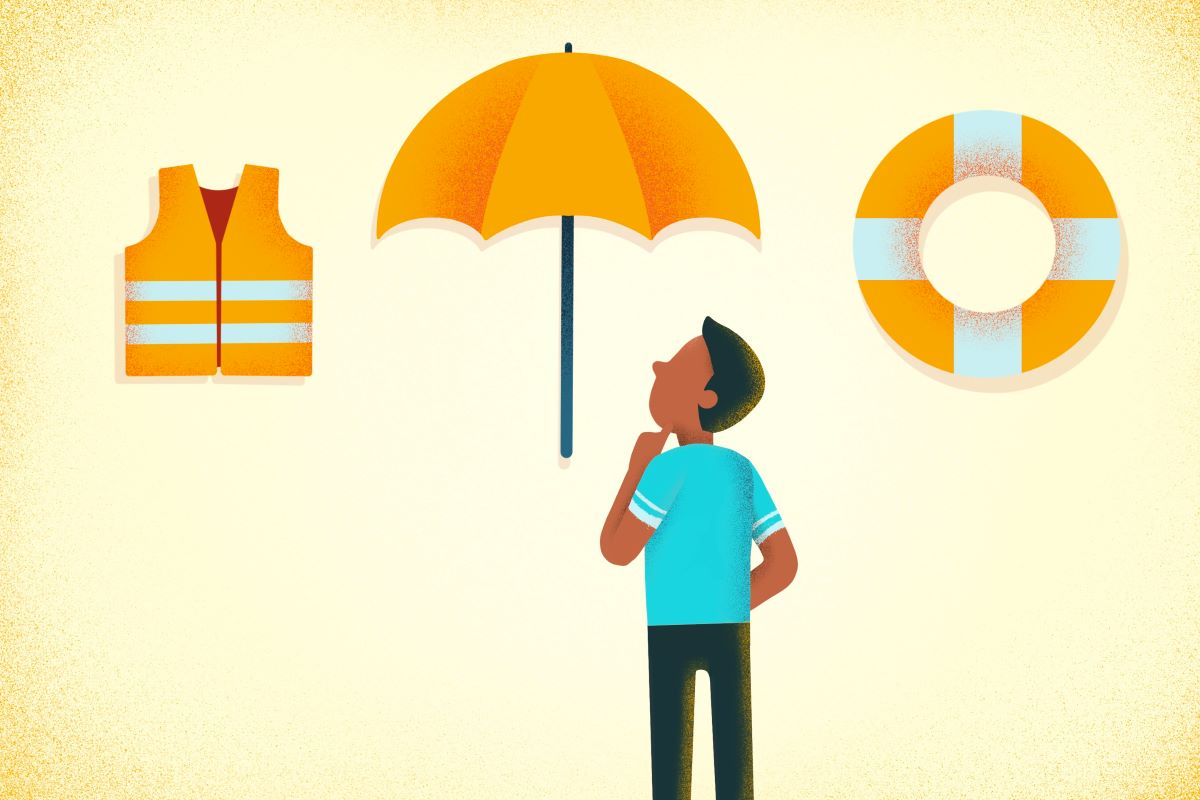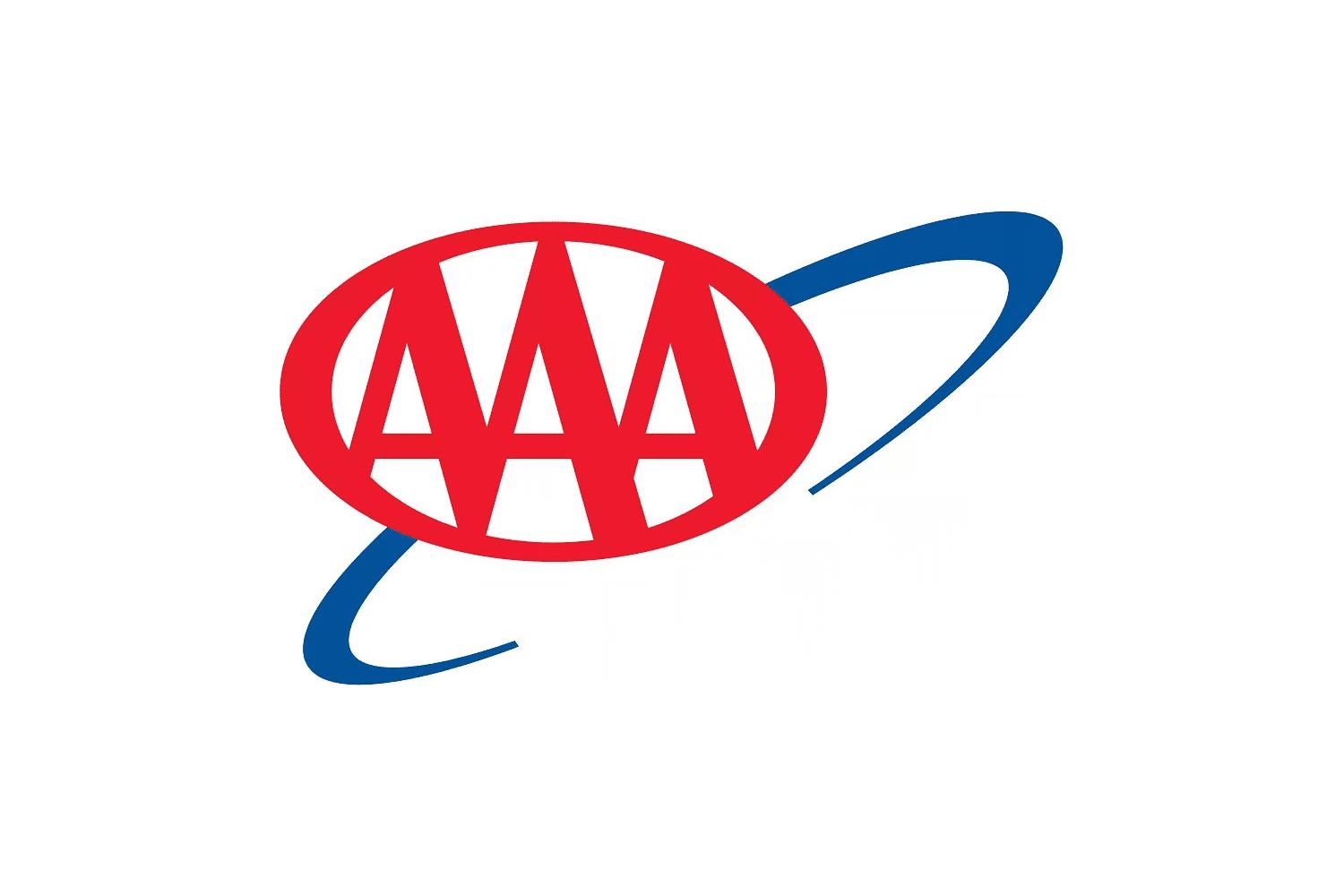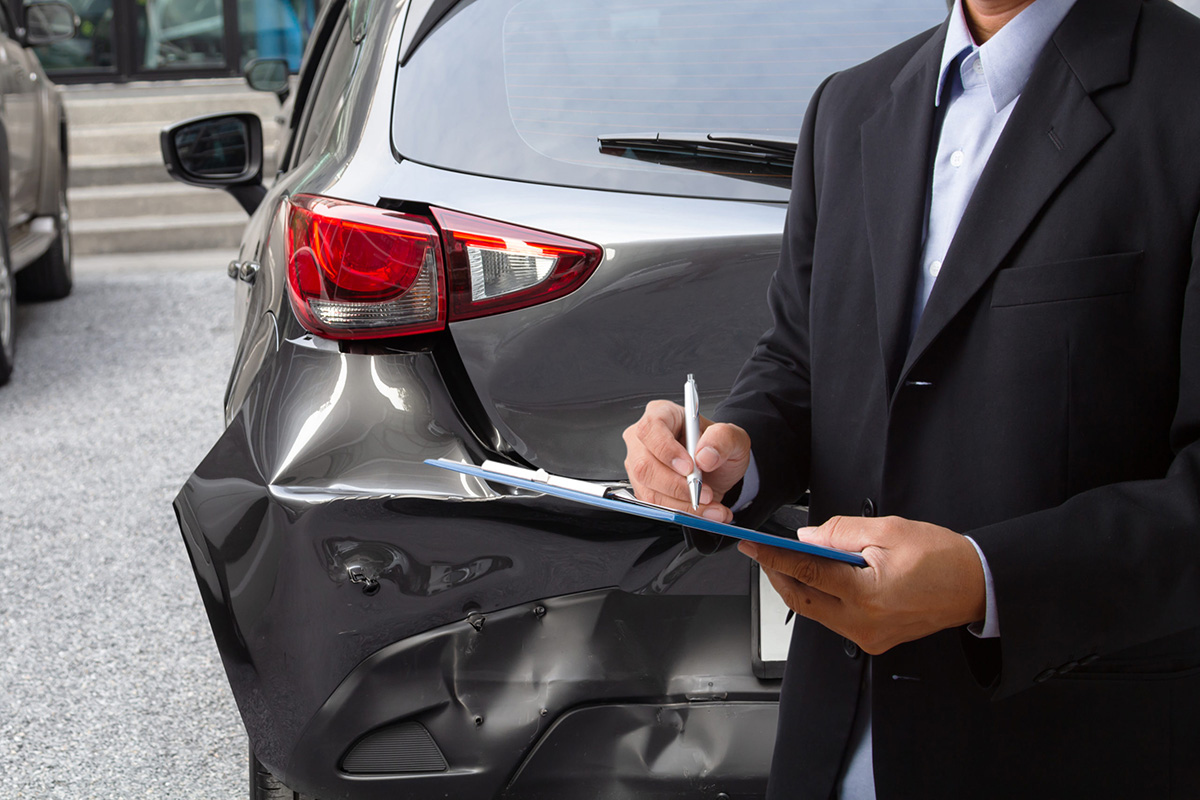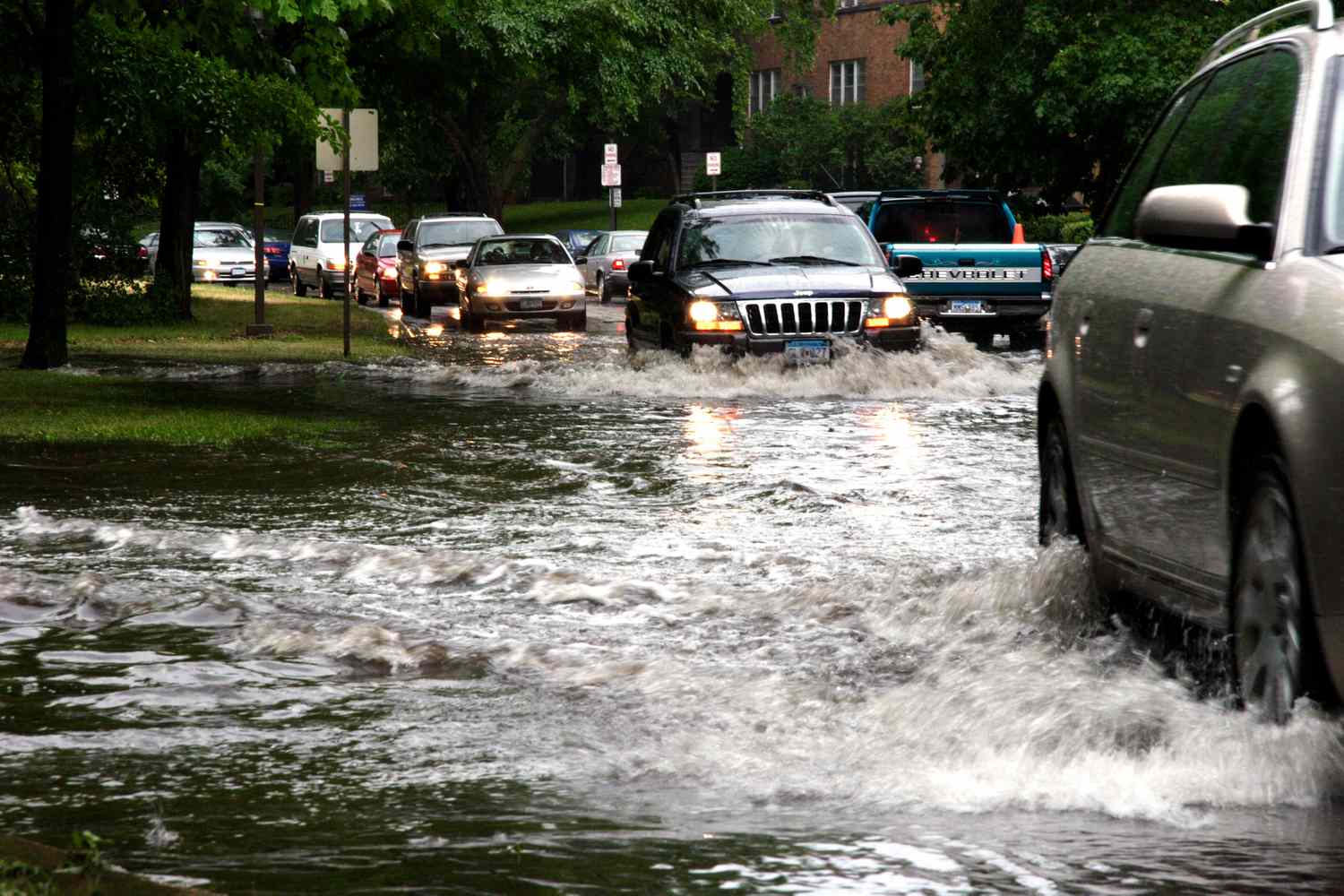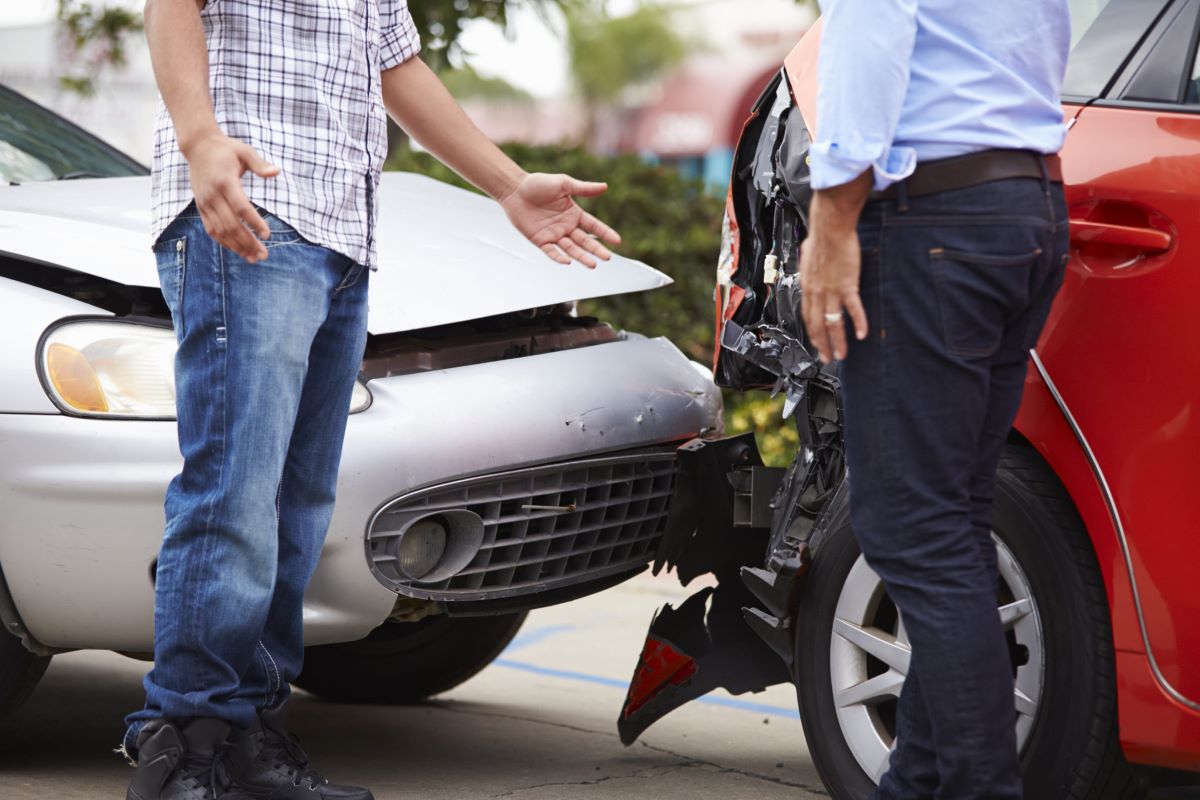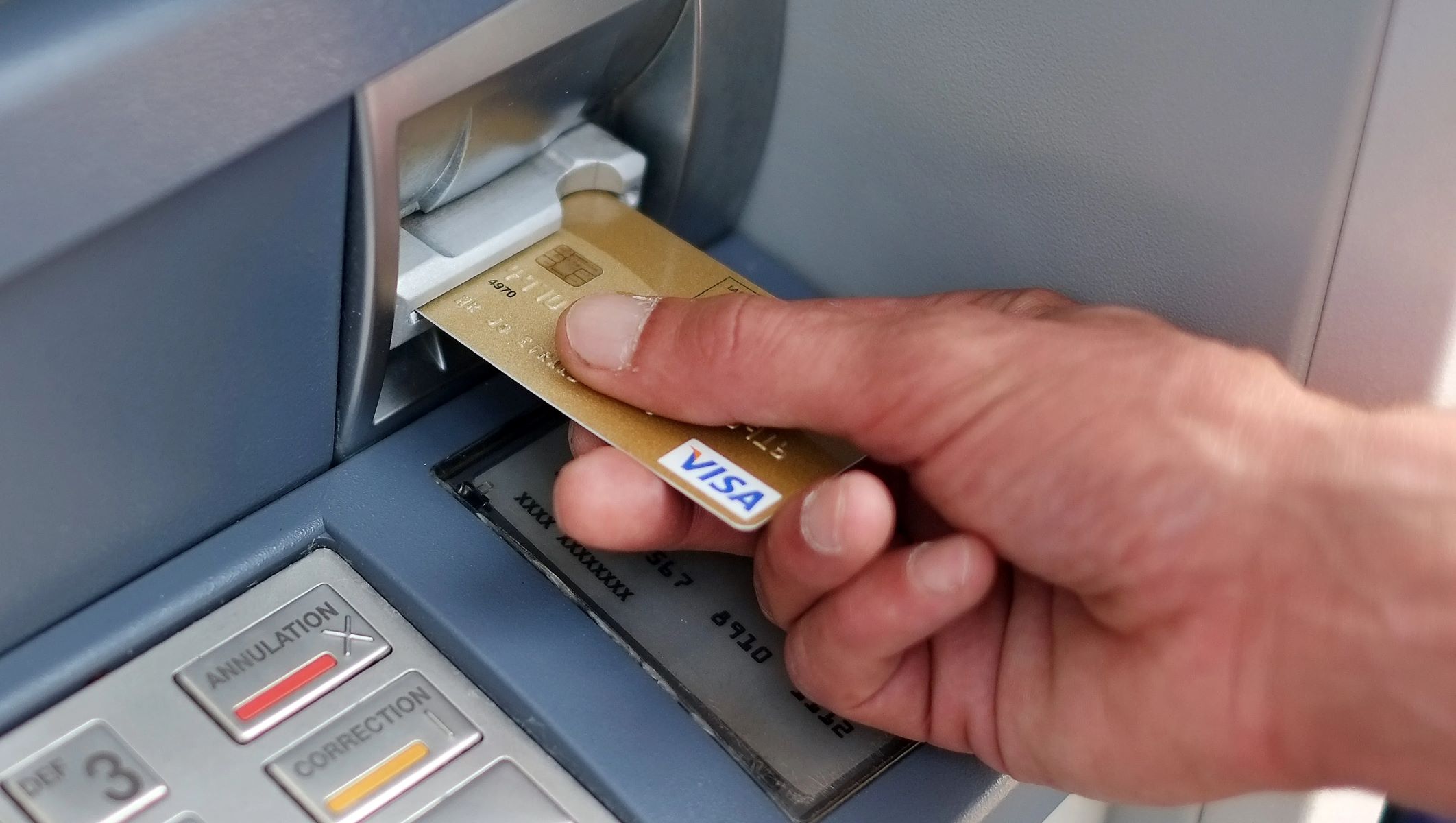Home>Finance>What Is Considered Full Coverage Insurance In Florida


Finance
What Is Considered Full Coverage Insurance In Florida
Published: November 24, 2023
Learn what is considered full coverage insurance in Florida and how it can provide financial protection for your vehicle, giving you peace of mind on the road.
(Many of the links in this article redirect to a specific reviewed product. Your purchase of these products through affiliate links helps to generate commission for LiveWell, at no extra cost. Learn more)
Table of Contents
- Introduction
- Understanding Full Coverage Insurance
- Minimum Insurance Requirements in Florida
- Components of Full Coverage Insurance
- Bodily Injury Liability Coverage
- Property Damage Liability Coverage
- Personal Injury Protection (PIP) Coverage
- Uninsured/Underinsured Motorist Coverage
- Comprehensive Coverage
- Collision Coverage
- Additional Coverages
- Factors Affecting Full Coverage Insurance Cost
- How to Obtain Full Coverage Insurance in Florida
- Conclusion
Introduction
Welcome to the world of insurance, where safeguarding your assets and protecting yourself from unforeseen incidents is of utmost importance. If you own a vehicle in the state of Florida, having the right insurance coverage is not only a smart choice but also a legal requirement. In this article, we will delve into the concept of full coverage insurance in Florida, understanding its components, requirements, and how to obtain it.
Full coverage insurance is a comprehensive insurance policy that provides a wide range of coverages to protect you financially in case of an accident or other damage to your vehicle. While the term “full coverage” may imply that it includes every possible type of coverage, it is important to understand that it does not cover every potential risk.
In Florida, like in most states, having at least the minimum required insurance coverage is mandatory. However, the definition of full coverage may vary among insurers. Typically, it encompasses liability coverage, which includes bodily injury and property damage liability, along with additional coverages such as personal injury protection (PIP), uninsured/underinsured motorist coverage, collision coverage, and comprehensive coverage.
The cost of full coverage insurance in Florida can vary depending on multiple factors, including your driving history, the type of vehicle you have, your age, your location, and the deductible you choose. It is crucial to shop around and compare quotes from different insurers to find the most affordable and suitable coverage for your needs.
In the following sections, we will break down the components of full coverage insurance in Florida, explore the minimum insurance requirements, and discuss the factors that can affect the cost of your insurance premiums. Additionally, we will provide insights on how to obtain full coverage insurance in Florida to ensure you have the financial protection you need on and off the road.
Understanding Full Coverage Insurance
When it comes to auto insurance, the term “full coverage” can seem a bit vague. While it does not have a standardized definition, it generally refers to a comprehensive insurance policy that offers a wide range of coverages to protect you financially in various situations. Full coverage insurance typically includes liability coverage, personal injury protection (PIP), uninsured/underinsured motorist coverage, collision coverage, and comprehensive coverage.
Liability coverage is the foundation of any auto insurance policy. It consists of bodily injury liability coverage, which pays for medical expenses, lost wages, and legal fees if you injure someone in an accident, and property damage liability coverage, which covers the cost of repairing or replacing someone else’s property, such as their vehicle or other structures, if you are at fault.
Personal Injury Protection (PIP) coverage is required in Florida and provides benefits to cover medical expenses, lost wages, and other related costs, regardless of who is at fault in an accident. PIP coverage can also extend to passengers in your vehicle and pedestrians involved in the accident.
Uninsured/underinsured motorist coverage protects you if you are involved in an accident with a driver who has insufficient or no insurance. It helps cover your medical expenses, lost wages, and other damages caused by an uninsured or underinsured driver.
Collision coverage covers the cost of repairing or replacing your vehicle if you are involved in a collision with another vehicle or an object, regardless of fault. It can help you get your car back on the road quickly.
Comprehensive coverage offers protection for damages to your vehicle caused by incidents other than collisions, such as theft, vandalism, natural disasters, or falling objects. It provides peace of mind knowing that you are covered in a wide range of scenarios.
While these coverages are typically included in a full coverage insurance policy, it is important to note that they may not cover certain situations, such as normal wear and tear, mechanical breakdowns, or intentional damage caused by the policyholder.
Now that you have a better understanding of the components of full coverage insurance, let’s explore the minimum insurance requirements in Florida and how they factor into your coverage.
Minimum Insurance Requirements in Florida
In Florida, all registered vehicles must have the minimum required insurance coverage to legally operate on the roads. The minimum insurance requirements in Florida are different from those in other states, as Florida follows a no-fault insurance system.
Under the no-fault system, every driver is required to carry a minimum of $10,000 in Personal Injury Protection (PIP) coverage and $10,000 in Property Damage Liability (PDL) coverage.
The $10,000 PIP coverage is designed to provide benefits to cover medical expenses, lost wages, and other related costs incurred as a result of a car accident, regardless of who is at fault. This coverage extends to the policyholder, household relatives, and passengers in the insured vehicle. PIP coverage also applies if you are a pedestrian or bicyclist involved in a motor vehicle accident.
The $10,000 PDL coverage pays for the cost of repairing or replacing another person’s property that is damaged as a result of a car accident where you are at fault. This typically includes other vehicles, buildings, or objects damaged in the accident.
It’s important to note that these minimum coverage requirements are the bare minimum required by law. They may not provide adequate protection in certain situations, especially if the damages exceed the coverage limits. That’s why many drivers in Florida opt for additional coverages to ensure they have enough financial protection.
Keep in mind that failing to maintain the minimum required insurance coverage in Florida can result in penalties and consequences, such as fines, suspension of your driver’s license and vehicle registration, and even potential legal issues. It is essential to comply with the state’s insurance requirements to avoid these consequences and protect yourself financially.
Now that we understand the minimum insurance requirements in Florida, let’s explore each component of full coverage insurance in more detail to grasp their significance in protecting you and your assets in various situations.
Components of Full Coverage Insurance
Full coverage insurance is a comprehensive policy that provides a range of coverages to protect you and your vehicle financially. While the specific components may vary depending on the insurer, there are several common coverages that are typically included in a full coverage insurance policy.
Bodily Injury Liability Coverage
Bodily injury liability coverage protects you if you are at fault in an accident that causes injury or death to another person. This coverage helps pay for medical expenses, rehabilitation costs, lost wages, and legal fees if you are sued as a result of the accident. It is important to have sufficient bodily injury liability coverage to protect your assets in the event of a serious accident.
Property Damage Liability Coverage
Property damage liability coverage pays for the cost of repairing or replacing someone else’s property that is damaged as a result of an accident where you are at fault. This coverage typically includes repairs to other vehicles, buildings, and other structures. Property damage liability coverage helps protect you from financial liability if you cause damage to someone else’s property.
Personal Injury Protection (PIP) Coverage
Personal Injury Protection (PIP) coverage is required in Florida and provides benefits to cover medical expenses, lost wages, and other related costs incurred as a result of a car accident, regardless of who is at fault. PIP coverage can also extend to passengers in your vehicle and pedestrians involved in the accident. Having PIP coverage ensures that you have access to immediate medical treatment and financial support in the event of an accident.
Uninsured/Underinsured Motorist Coverage
Uninsured/Underinsured Motorist (UM/UIM) coverage protects you if you are involved in an accident with a driver who has insufficient or no insurance. This coverage helps cover your medical expenses, lost wages, and other damages caused by an uninsured or underinsured driver. UM/UIM coverage provides an extra layer of protection to ensure you are not left financially burdened if you are in an accident with an uninsured or underinsured driver.
Comprehensive Coverage
Comprehensive coverage offers protection for damages to your vehicle caused by incidents other than collisions. This can include theft, vandalism, natural disasters, falling objects, and more. Comprehensive coverage ensures that you are covered for a wide range of scenarios, giving you peace of mind knowing that you have financial protection against non-accident-related damages.
Collision Coverage
Collision coverage covers the cost of repairing or replacing your vehicle if you are involved in a collision with another vehicle or object, regardless of fault. This coverage is especially important if you have a newer or more valuable vehicle, as it helps ensure that you can quickly repair or replace your vehicle in the event of an accident.
In addition to these core coverages, full coverage insurance may also include optional add-ons such as medical payments coverage, roadside assistance, and rental reimbursement. These additional coverages provide extra protection and convenience, depending on your specific needs and preferences.
Now that we have explored the components of full coverage insurance, let’s delve deeper into each coverage to understand their significance and how they can provide financial protection in various scenarios.
Bodily Injury Liability Coverage
Bodily injury liability coverage is an essential component of full coverage insurance that protects you financially in the event that you are at fault for an accident that causes injury or death to another person. This coverage helps pay for medical expenses, rehabilitation costs, lost wages, and legal fees if you are sued as a result of the accident.
Having adequate bodily injury liability coverage is crucial for protecting your assets and ensuring that you can afford the financial repercussions of a serious accident. Medical bills can quickly escalate, particularly in the case of severe injuries, and without sufficient coverage, you may be held personally responsible for paying the costs out of pocket.
When you purchase full coverage insurance, you will typically have the option to choose the limits for bodily injury liability coverage. The limits represent the maximum amount your insurance company will pay for each injured person and the total amount they will pay for all injuries sustained in the accident.
For example, if you have bodily injury liability coverage with limits of $100,000/$300,000, this means that your insurance company will pay up to $100,000 for injuries sustained by one person and up to a total of $300,000 for all injuries in the accident.
It’s important to carefully consider the limits you select for bodily injury liability coverage. While it may be tempting to opt for the minimum required coverage, this may not provide sufficient protection in the event of a serious accident. Increasing your coverage limits can better safeguard your personal assets and protect you from potential financial ruin.
Additionally, it’s essential to understand that bodily injury liability coverage only applies to injuries sustained by others involved in the accident. It does not cover your injuries or the injuries of your passengers. For that, you would need personal injury protection (PIP) coverage.
Remember, the purpose of full coverage insurance is to provide you with comprehensive protection in various situations. Bodily injury liability coverage is critical for protecting your financial well-being and ensuring that you can handle the medical expenses, legal fees, and other costs associated with causing injuries to others.
Now that we have explored bodily injury liability coverage, let’s move on to discussing property damage liability coverage and its significance in full coverage insurance.
Property Damage Liability Coverage
Property damage liability coverage is an essential component of full coverage insurance that protects you financially in the event that you are at fault for an accident that causes damage to someone else’s property. This coverage helps pay for the cost of repairing or replacing another person’s property, such as their vehicle or other structures, that is damaged as a result of the accident.
Accidents can result in significant property damage and repair costs. Without property damage liability coverage, you would be responsible for paying for the damages out of pocket. This could be financially devastating, particularly if the damages are extensive or involve expensive vehicles or structures.
When you purchase full coverage insurance, you will typically have the option to choose the limits for property damage liability coverage. The limits represent the maximum amount your insurance company will pay for property damage caused by you in an accident.
For example, if you have property damage liability coverage with a limit of $50,000, this means that your insurance company will pay up to $50,000 for property damage caused by you in an accident.
It’s important to carefully consider the limits you select for property damage liability coverage. While the minimum required coverage may be tempting to choose, it may not provide sufficient protection, especially if you are involved in an accident that results in extensive property damage. Opting for higher coverage limits can better safeguard your financial well-being and protect you from potential legal and financial consequences.
Property damage liability coverage typically covers damages to other people’s vehicles, buildings, or objects that are damaged in an accident where you are at fault. It does not cover the cost of repairing or replacing your own vehicle. For that, collision coverage would be necessary.
Remember, full coverage insurance is designed to provide comprehensive protection in various scenarios. Property damage liability coverage is vital for protecting your assets and ensuring that you can handle the financial responsibility of damaged property resulting from an accident where you are at fault.
Now that we have explored property damage liability coverage, let’s move on to discussing personal injury protection (PIP) coverage and its significance in full coverage insurance.
Personal Injury Protection (PIP) Coverage
Personal Injury Protection (PIP) coverage is a crucial component of full coverage insurance, particularly in the state of Florida where it is required by law. PIP coverage provides benefits to cover medical expenses, lost wages, and other related costs incurred as a result of a car accident, regardless of who is at fault.
Florida follows a no-fault insurance system, which means that regardless of who caused the accident, each party’s insurance company is responsible for covering their own medical expenses and other financial losses up to the limits of their PIP coverage.
PIP coverage is designed to provide prompt medical treatment and financial support to those injured in a car accident. It typically covers medical expenses, such as hospital bills, doctor visits, surgeries, and prescription medications. It may also cover rehabilitation services, such as physical therapy, and even reimburse lost wages if you are unable to work due to your injuries.
In Florida, the minimum required PIP coverage is $10,000. However, you can choose to increase this limit to ensure you have sufficient coverage to meet your needs. It is important to carefully consider your health insurance coverage, as well, as it may impact your decision on PIP coverage limits.
PIP coverage applies not only to the policyholder but also to their household relatives and passengers in the insured vehicle. Additionally, PIP coverage may extend to pedestrians and bicyclists involved in a motor vehicle accident. This coverage provides a level of financial protection to all individuals involved in the accident, regardless of fault.
It’s important to note that PIP coverage does not provide compensation for non-economic damages, such as pain and suffering or emotional distress. These types of damages may be pursued through a personal injury lawsuit, depending on the circumstances of the accident.
Having PIP coverage is not only a legal requirement in Florida but also a practical way to ensure that you have access to immediate medical treatment and financial support in the event of an accident. It provides a safety net that covers your medical expenses and helps alleviate the financial burden associated with an unexpected injury.
Now that we have explored the importance of PIP coverage, let’s move on to discussing uninsured/underinsured motorist coverage and its role in full coverage insurance.
Uninsured/Underinsured Motorist Coverage
Uninsured/Underinsured Motorist (UM/UIM) coverage is a vital component of full coverage insurance that protects you in the event that you are involved in an accident with a driver who has insufficient or no insurance coverage. This coverage helps cover your medical expenses, lost wages, and other damages caused by an uninsured or underinsured driver.
Despite the legal requirement for all drivers to have insurance coverage, there are still instances where drivers may operate their vehicles without proper insurance or with coverage limits that are insufficient to cover the full extent of their liability. In such cases, if you are not at fault for the accident, you may struggle to receive the compensation you need to recover from your injuries and damages.
UM/UIM coverage provides an additional layer of protection in these situations. If you are involved in an accident with an uninsured or underinsured driver, your own insurance company will step in and act as if they were the at-fault driver’s insurance. This coverage helps bridge the gap and provides you with the necessary financial support to cover your expenses.
UM/UIM coverage typically includes coverage for medical expenses, lost wages, pain and suffering, and other damages resulting from the accident. The specific coverage limits will vary based on the policy you choose.
Having UM/UIM coverage is particularly important in states with high rates of uninsured drivers or where minimum insurance requirements may be low. It ensures that you are protected, even if you are involved in an accident with a driver who does not have adequate insurance.
It’s important to understand that UM/UIM coverage is not automatically included in all auto insurance policies. In some states, it may be required by law, while in others, it may be an optional coverage that you can choose to add to your policy. It’s highly recommended to include UM/UIM coverage in your full coverage insurance to safeguard yourself against potential financial risks.
Before determining your UM/UIM coverage limits, consider factors such as the number of uninsured drivers in your area, the potential medical expenses and loss of income if you are unable to work, and the value of your assets that you need to protect. By choosing appropriate coverage limits, you can ensure that you have the necessary protection to cover your damages in the event of an accident involving an uninsured or underinsured motorist.
Now that we have discussed UM/UIM coverage, let’s move on to exploring comprehensive coverage and its significance in full coverage insurance.
Comprehensive Coverage
Comprehensive coverage is a crucial component of full coverage insurance that provides financial protection for damages to your vehicle caused by incidents other than collisions. This coverage ensures that you are covered for a wide range of scenarios, giving you peace of mind knowing that you have financial protection against non-accident-related damages.
Comprehensive coverage typically covers damages caused by theft, vandalism, fire, natural disasters, falling objects, and animal collisions. It helps you recover the costs of repairing or replacing your vehicle if it is damaged or destroyed due to any of these covered events.
For example, if your car is stolen, comprehensive coverage will help cover the cost of replacing your vehicle. If your car is damaged in a hailstorm or by a falling tree branch, comprehensive coverage will help pay for the necessary repairs.
Comprehensive coverage is beneficial for various reasons. First, it provides financial protection against unpredictable and uncontrollable events that can cause significant damage to your vehicle. Second, it can be particularly valuable for those who live in areas prone to theft, vandalism, or natural disasters.
When purchasing comprehensive coverage, you will need to select a deductible, which is the amount you are responsible for paying out of pocket before your insurance coverage kicks in. The deductible can range from a few hundred dollars to several thousand dollars.
It’s essential to choose a deductible that you can comfortably afford in the event of a claim. A higher deductible typically results in lower insurance premiums, but it also means you will have a larger out-of-pocket expense if you need to file a claim. Conversely, a lower deductible will result in higher premiums, but it may provide more immediate financial assistance in the event of a claim.
Keep in mind that comprehensive coverage is usually an optional coverage, but it is highly recommended to include it in your full coverage insurance policy. By doing so, you are better prepared for unexpected incidents that can cause damage to your vehicle.
Now that we have explored the significance of comprehensive coverage, let’s move on to discussing collision coverage and its role in full coverage insurance.
Collision Coverage
Collision coverage is a crucial component of full coverage insurance that provides financial protection for damages to your vehicle caused by collisions with other vehicles or objects. This coverage ensures that you can quickly repair or replace your vehicle in the event of an accident, regardless of who is at fault.
Accidents happen, and the costs of repairs or replacing a vehicle can be substantial. Without collision coverage, you would be responsible for covering these expenses out of pocket, which can put a significant strain on your finances.
Collision coverage typically helps cover the cost of repairs or replacement of your vehicle, up to its actual cash value. The coverage includes accidents involving other vehicles, as well as collisions with objects such as light poles, fences, or buildings.
When purchasing collision coverage, you will need to choose a deductible, which is the amount you are responsible for paying out of pocket before your insurance coverage takes effect. Deductibles for collision coverage can vary, and the amount you choose will impact your insurance premium.
Choosing a higher deductible will result in lower insurance premiums, but it means you will have a larger out-of-pocket expense if you need to file a claim. On the other hand, choosing a lower deductible will result in higher premiums, but it may provide more immediate financial assistance in the event of an accident.
Collision coverage is particularly important if you have a newer or more valuable vehicle. The cost of repairs or replacement can be significant, and having collision coverage ensures that you can get your vehicle back on the road quickly without having to bear the full financial burden.
It’s crucial to note that collision coverage only applies to damages to your own vehicle and does not cover damages to other vehicles or property. For damages caused to others, property damage liability coverage would come into play.
While collision coverage is typically optional, it is highly recommended to include it in your full coverage insurance policy. Doing so provides you with the financial protection you need to handle the costs of repairing or replacing your vehicle in the event of a collision.
Now that we have explored the significance of collision coverage, let’s move on to discussing additional coverages that can be included in full coverage insurance.
Additional Coverages
In addition to the core coverages of liability, personal injury protection (PIP), uninsured/underinsured motorist, comprehensive, and collision, full coverage insurance may also include various optional add-on coverages that provide additional protection and peace of mind.
Medical Payments Coverage
Medical payments coverage, also known as MedPay, helps cover medical expenses for you and your passengers regardless of who is at fault in an accident. It can provide additional financial support for medical bills, ambulance fees, and other related costs that may not be fully covered by your personal health insurance or PIP coverage.
Roadside Assistance
Roadside assistance coverage provides support and assistance in case of a breakdown or other roadside emergencies. This coverage typically includes services such as towing, jump-starts, flat tire changes, and fuel delivery. Having roadside assistance can provide convenience and peace of mind, especially during situations where you are stranded on the road.
Rental Reimbursement
Rental reimbursement coverage helps cover the cost of renting a vehicle if your car is damaged in an accident and needs repairs. This coverage can help ensure that you have alternate transportation during the repair process so that you can continue with your daily activities without interruption.
Gap Insurance
Gap insurance is a coverage option primarily for those who have a leased or financed vehicle. It covers the difference between the actual cash value of your vehicle and the remaining balance on your loan or lease in the event of a total loss. Gap insurance can provide financial protection and ensure that you are not left with a significant financial burden in case of a total loss.
Custom Parts and Equipment Coverage
If you have made modifications or installed custom parts on your vehicle, custom parts and equipment coverage can help protect those additions. This coverage provides compensation for the repair or replacement of custom parts or equipment that are damaged in an accident or stolen.
These additional coverages can vary among insurance providers, and not all may be available or necessary for your specific situation. It’s essential to review your policy and discuss with your insurance agent to determine which additional coverages are beneficial and align with your needs.
When customizing your full coverage insurance policy, consider factors such as your personal circumstances, driving habits, and the value of your vehicle. Adding these optional coverages can provide extra protection and enhance the overall coverage of your policy.
Now that we have explored the various additional coverages that can be included in full coverage insurance, let’s move on to discussing the factors that can impact the cost of full coverage insurance premiums.
Factors Affecting Full Coverage Insurance Cost
Several factors are taken into consideration when determining the cost of full coverage insurance premiums. Insurance companies assess different variables to assess the level of risk associated with insuring a specific individual or vehicle. These factors can impact the overall cost of your insurance coverage. Understanding these factors can help you make informed decisions and potentially save on your insurance premiums.
Driving Record
Your driving record plays a significant role in determining the cost of your insurance premiums. Insurance companies typically review your history of traffic violations, accidents, and any previous claims. Drivers with a clean record and no accidents or violations are generally considered lower risk and may be eligible for lower insurance rates.
Age and Gender
Age and gender are factors that insurers consider when calculating insurance premiums. Younger drivers, especially teenagers, are typically deemed riskier due to their lack of driving experience. As a result, they may face higher insurance rates. Additionally, statistics show that younger male drivers tend to have more accidents than their older counterparts, resulting in higher premiums for this demographic.
Location
Your location can impact the cost of your full coverage insurance. Insurance companies assess the area where you live, including factors such as crime rates, population density, and the prevalence of accidents. Urban areas with a higher risk of accidents and theft may result in higher insurance premiums compared to rural areas with lower population density.
Vehicle Type
The make, model, and year of your vehicle also influence your insurance premiums. Vehicles that are more expensive to repair or have higher theft rates are generally associated with higher insurance costs. Additionally, vehicles with advanced safety features or high safety ratings may qualify for discounts on insurance premiums.
Deductible Amount
The deductible you choose can impact the cost of your full coverage insurance premiums. A deductible is the amount you pay out of pocket before your insurance coverage kicks in. A higher deductible typically results in lower premiums, while a lower deductible means higher premiums. Consider your financial situation and ability to cover a higher deductible when determining the appropriate balance between premium costs and out-of-pocket expenses in the event of a claim.
Credit Score
Some insurance companies consider credit scores when determining insurance premiums. Studies have shown that individuals with lower credit scores may be more likely to file insurance claims. As a result, individuals with low credit scores may face higher insurance rates compared to those with higher credit scores.
It’s important to note that insurance companies weigh these factors differently, and not all insurers place the same level of importance on each factor. Additionally, each state has its own insurance regulations, which may affect how these factors are considered.
By understanding the factors that impact the cost of full coverage insurance, you can take steps to potentially lower your premiums. Shopping around for quotes from different insurance providers, maintaining a clean driving record, and considering various deductible options can help you find the most affordable and suitable full coverage insurance policy for your needs and budget.
Now that we have explored the factors that can affect the cost of full coverage insurance premiums, let’s move on to discussing how to obtain full coverage insurance in Florida.
How to Obtain Full Coverage Insurance in Florida
If you own a vehicle in Florida, it is not only important but also a legal requirement to have the appropriate insurance coverage. To obtain full coverage insurance in Florida, follow these steps:
1. Determine Your Coverage Needs
Assess your needs and consider the extent of coverage you require based on your vehicle type, driving habits, and personal circumstances. Full coverage insurance typically includes liability, personal injury protection (PIP), uninsured/underinsured motorist, comprehensive, and collision coverages. Determine the coverage limits and any additional coverages you may need.
2. Shop Around and Compare Quotes
Contact multiple insurance companies and request quotes for full coverage insurance. Compare the coverage options and premiums from different insurers to find the best value for your needs. Consider not only the price but also the reputation and customer service of the insurance company.
3. Provide Accurate Information
When applying for insurance, provide accurate and up-to-date information to the insurance company. This includes details about your vehicle, driving history, and personal information. Inaccurate or false information could lead to coverage issues or potential claim denials in the future.
4. Choose Appropriate Deductibles
Select the deductible amounts for your comprehensive and collision coverages. The deductible is the amount you are responsible for paying out of pocket before insurance coverage kicks in. Consider your financial situation and choose a deductible that you can comfortably afford in the event of a claim.
5. Review Policy and Terms
Carefully review the full coverage insurance policy documents before signing and making a payment. Pay attention to the coverage limits, exclusions, terms, and any additional fees or discounts provided. Ensure that the policy meets your needs and that you understand the terms and conditions of the coverage.
6. Maintain Proof of Insurance
After obtaining full coverage insurance, make sure to always keep proof of insurance in your vehicle. This can be in the form of an insurance card or digital proof of insurance. You may be required to provide proof of insurance during traffic stops or after an accident.
7. Review and Update Your Coverage Regularly
Periodically review your full coverage insurance policy to ensure that it continues to meet your needs. Consider any changes in your circumstances, such as purchasing a new vehicle or adding additional drivers to your policy. Regularly updating your coverage helps ensure that you are adequately protected.
Remember that driving without the minimum required insurance coverage in Florida can result in penalties and legal consequences. It is essential to maintain the appropriate insurance coverage to protect yourself, your vehicle, and other road users.
By following these steps, you can obtain full coverage insurance that provides you with the necessary financial protection and peace of mind while driving in Florida.
Now that we have explored how to obtain full coverage insurance in Florida, let’s conclude our discussion.
Conclusion
Full coverage insurance in Florida is a comprehensive insurance policy that provides a range of coverages to protect you and your vehicle financially. It includes components such as bodily injury liability coverage, property damage liability coverage, personal injury protection (PIP) coverage, uninsured/underinsured motorist coverage, comprehensive coverage, and collision coverage. Understanding these coverages and their significance is essential for ensuring that you have the appropriate protection on the road.
When obtaining full coverage insurance in Florida, it is important to consider factors such as your coverage needs, shopping around for quotes, providing accurate information, selecting appropriate deductibles, reviewing policy terms, maintaining proof of insurance, and regularly reviewing and updating your coverage. By following these steps, you can find the best full coverage insurance policy for your needs and ensure that you comply with the state’s insurance requirements.
Remember that full coverage insurance not only offers financial protection but also provides peace of mind. It safeguards your assets, covers medical expenses, and protects you from potential legal consequences in the event of an accident or damage to your vehicle.
As you navigate the world of insurance, always stay informed and proactive. Regularly review your policy, assess your evolving needs, and make any necessary adjustments to your coverage. By doing so, you can have the peace of mind knowing that you are adequately protected on the roads of Florida.
Now that you have a comprehensive understanding of full coverage insurance in Florida, you can confidently navigate the insurance landscape and make informed decisions to ensure your financial well-being and protection as a driver.


